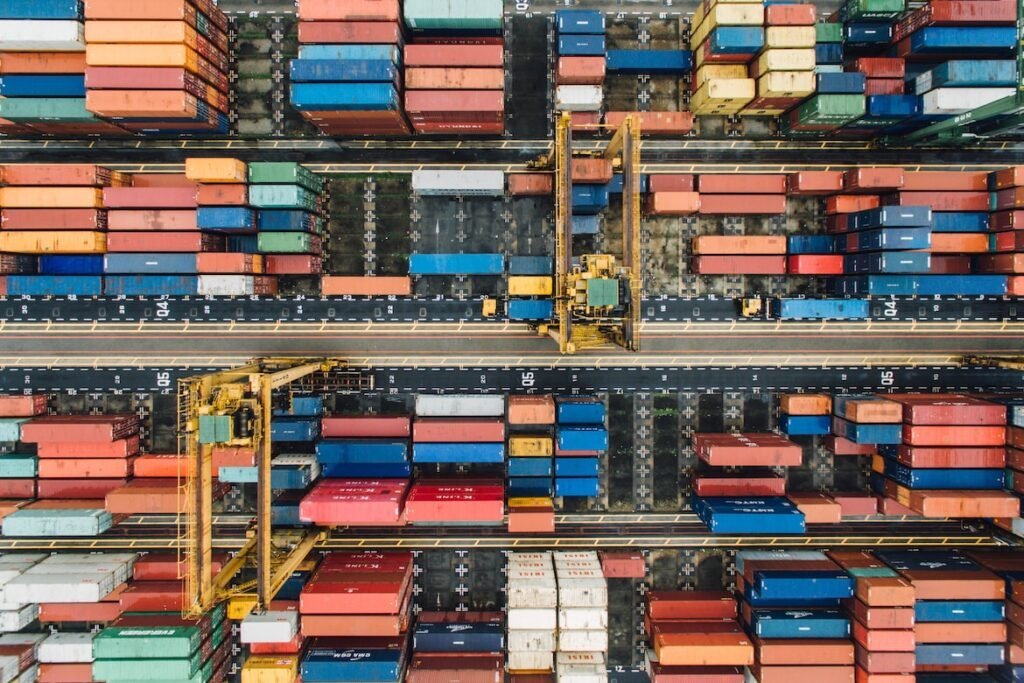The logistics industry is experiencing an era of unprecedented transformation as customer expectations are rising. New technologies are improving efficiency in the sector, resulting in collaborative operating models which help reshape the marketplace in incredible ways.
Any business seeking to remain relevant in the long run must adapt to the latest tech improvements and implement efficient strategies to succeed.
Let’s take a look at the trends impacting the logistics sector in 2023.
Green logistics
Given the significant effects of pollution on the planet, green logistics is a trend all businesses should keep an eye on. It is no secret that ventures generate a lot of waste through their operations, so they must look for ways to reduce their environmental footprint. Green logistics encourages companies to decrease waste production and energy use, which ultimately helps improve operational efficiency and provides customer satisfaction.
One way you can apply green logistics to your business is through transportation route optimization. This is achieved by analyzing weather conditions, traffic patterns, as well as the amount of goods and their weight. If commodities travel shorter distances, fuel usage can be reduced to a considerable level. Moreover, educating stakeholders, customers and employees on green logistics is also important because it helps ensure everyone is on the same page regarding sustainable practices within the company.
Automation
Automation is an excellent resource in today’s world, helping companies cut costs and improve efficiencies while allowing team members to focus on more productive activities. Natural the logistics industry, processes like manual warehouse picking and inbound logistics aren’t only time-consuming but also pose health risks and can lead to significant mistakes. However, automated solutions help streamline these processes, thus ensuring high accuracy.
Operations managers often have to lift and move heavy loads manually, which can represent a significant hazard. Automation comes as a great solution to reduce risk, enabling operators to move objects of different weights and sizes with complete precision. This helps prevent injuries while providing real time-visibility and reducing the costs of your business.
Supply Chain Agility
Technology is constantly evolving, requiring businesses to adapt fast and respond efficiently to the changes in supply and demand to stay competitive. Embracing supply chain agility allows you to better meet customers’ expectations by adjusting your products effectively based on current trends in the market. Moreover, it can be an effective way of improving your stock management while reducing costs and boosting profit.
Supply chain agility is about responding quickly to the latest changes in demand and reducing supply chain disruptions as much as possible. To achieve this, companies must be proactive about risk management and use backup plans and other efficient strategies to resolve potential issues that may arise.
LTL Demand
The increasing popularity of eCommerce and the demand to speed up the shipping process requires logistics businesses to make smaller shipments regularly. LTL (less than truckload) is the solution, ensuring that several smaller orders from different organizations are placed on a single carrier, resulting in a full load with many delivery stops. LTL freight comes with plenty of benefits, like reduced costs and increased security. Additionally, it helps decrease the shipping’s environmental impact considerably due to carriers moving fuller loads. This means fewer trips to deliver the products, significantly reducing emissions.
As you can see, this trend doesn’t only have advantages for your business, but also for the environment, so it only makes sense to consider it. With a dependable transport company by your side, your logistics will improve significantly. You’ll get different transport options, updated tech systems that allow you to track your orders, competitive shipping rates, drayage services, and, most importantly, a timely, reliable service.
Supply Chain Visibility
This refers to a business’ capacity to trace goods’ movements during the entire supply chain process. This is essential for companies, allowing them to keep a record of their suppliers’ performance, ensure the high quality of the goods, and improve operations. Supply chain visibility gives companies the possibility to understand their products’ whereabouts, empowering them to choose how to improve their supply chain procedures.
This trend is worth keeping an eye on, as it provides decreased production costs, a reduced likelihood of product recalls, and increased customer satisfaction. For example, ventures can find areas where they can lower expenses and improve their bottom line by tracking their items’ movement. This is done by identifying supply chain leakages and finding ways to reduce inefficiencies.
API-Based Integrations
Logistics businesses now incorporate API-based integrations due to APIs’ potential to perform real-time processing. This enables them to implement APIs successfully and obtain near-instantaneous data about customer orders and shipments. They can send updates to customers to meet their demands and expectations, which ultimately helps them optimize their business processes.
API-based integrations are a better alternative to EDI integrations which use batch processing. But that doesn’t make the former a replacement for EDI – APIs are chosen instead of EDI integrations only in instances where it makes the most sense to do so, helping reduce the amount of effort required to manage API integrations.
Demand Forecasting
Demand forecasting enables logistics companies to estimate future consumer demand by considering pertinent factors. They can analyze sales history, the economy, competition, market trends, pricing, and so on, identifying expected demand. This way, logistics businesses can develop an efficient plan to manage resources more successfully.
Demand forecasting can happen at different phases in the supply chain process, from pickup and shipping to the delivery of goods. If the demand forecast is accurate for all the stages, the company can optimize its operations significantly to fit demand levels.
The bottom line
Today, the logistics industry isn’t the same as ten years ago. Many significant trends are now impacting the sector, helping businesses improve the transportation process of their goods. Companies will only thrive in the environment if they embrace these evolving trends. This isn’t only a way to become better equipped to meet consumer demands and achieve optimal productivity, but it also allows businesses to commit to preserving nature.
